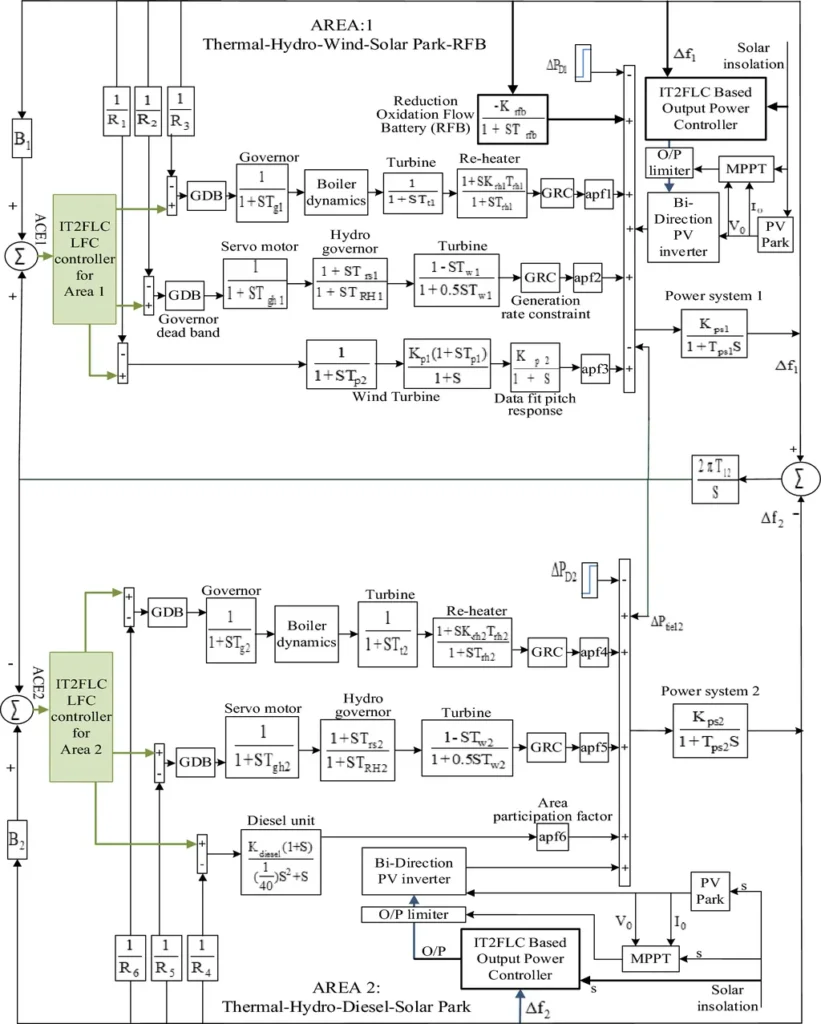In the quest to stabilize the grid as renewable energy sources become more prevalent, researchers have developed innovative methods to mitigate frequency deviations in hybrid renewable power grids. A recent study published in the journal ‘Nature Scientific Reports’ presents a novel approach that could significantly enhance the stability and efficiency of these grids, with substantial implications for the energy sector.
At the heart of this research is a modified fuzzy-TID controller, a sophisticated control system designed to manage the intricate dynamics of hybrid renewable power grids (HRPGs). The study, led by Mohamed Khamies from the Department of Electrical Engineering at Sohag University, introduces two primary strategies to tackle frequency deviations, a persistent challenge in grids with high penetration of renewable energy sources (RESs).
The first strategy involves integrating a fuzzy logic controller with an Integral-Tilt-Derivative (I-TD) controller in the secondary control loop. This hybrid controller, dubbed Fuzzy I-TD, demonstrates remarkable effectiveness in reducing frequency and tie-line deviations. “The Fuzzy I-TD controller significantly reduces frequency and tie-line deviations by 82.7% and 97.01%, respectively, when compared to other fuzzy-based controllers,” Khamies explains. This improvement is crucial for maintaining grid stability and preventing potential blackouts.
The second strategy builds on the first by incorporating controlled energy storage systems, such as plug-in electric vehicles (PEVs). By integrating PEVs into the grid, the Fuzzy I-TD controller can further mitigate frequency fluctuations by an additional 40%. This finding underscores the potential of energy storage systems to enhance grid stability and support the integration of renewable energy sources.
The research considers two models of HRPGs: a two-area power grid combining conventional power plants and RESs, and the IEEE 39-bus system with a unified power flow controller (UPFC). The parameters of the strategies are optimized using the Sea Horse Optimizer (SHO), a metaheuristic algorithm designed to handle complex optimization problems.
The implications of this research for the energy sector are profound. As the world transitions towards renewable energy, ensuring the stability and reliability of the grid is paramount. The Fuzzy I-TD controller, with or without PEVs, offers a promising solution to this challenge. By reducing frequency deviations, this controller can help prevent blackouts, improve grid efficiency, and support the integration of more renewable energy sources.
Moreover, the use of PEVs as energy storage systems presents an opportunity for the automotive and energy sectors to collaborate. As the number of electric vehicles on the road increases, their potential to support grid stability becomes more significant. This synergy could lead to the development of new business models and revenue streams for both sectors.
Looking ahead, this research could shape future developments in grid management and renewable energy integration. As Khamies notes, “The presented strategy is efficient and effective for HRPGs, demonstrating the potential of advanced control systems and energy storage solutions to address the challenges of the energy transition.” By continuing to innovate and optimize these technologies, the energy sector can build a more stable, reliable, and sustainable grid for the future.

